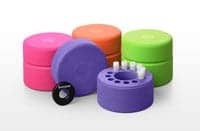
In the October issue of the journal Science Translational Medicine, Children’s Mercy researchers reported a proof-of-concept process, called STAT-Seq®, which used whole genome sequencing to diagnose critically ill infants.
STAT-Seq uses software developed at Children’s Mercy, which translates physician-entered clinical features in individual patients into a comprehensive set of relevant diseases. This software substantially automates identification of the DNA variations that can explain the child’s condition. The entire process—from blood draw to genome sequencing, analysis and diagnosis—took approximately 50 hours. Before STAT-Seq, testing even a single gene took 6 weeks, often longer.
“Fifty hours. That’s how long it now takes to decode and interpret a newborn baby’s genome—an undertaking that used to take weeks or even months,” TIME reported. “And those 2 days can mean the difference between life and death for a critically ill infant.” The rapid genome mapping test is #7 on TIME’s list.
“This test changes the paradigm for genetic sequencing and diagnosis. With the ability to decode a genome from start to finish in about 2 days, physicians can now rapidly apply all the appropriate medical innovations available to help those babies who need their care the most,” said Stephen Kingsmore, MB, ChB, DSc, FRCPath, director of the Center for Pediatric Genomic Medicine at Children’s Mercy.
The Center plans to make STAT-Seq a routine test at Children’s Mercy by 2013.
It is currently working at capacity to analyze data from patients at Children’s Mercy as well as from other pediatric institutions across the United States and around the world. The Center is currently seeking additional funding to make the test as accessible as possible and meet the high demand.
[Source; Children’s Mercy Hospitals and Clinics]



